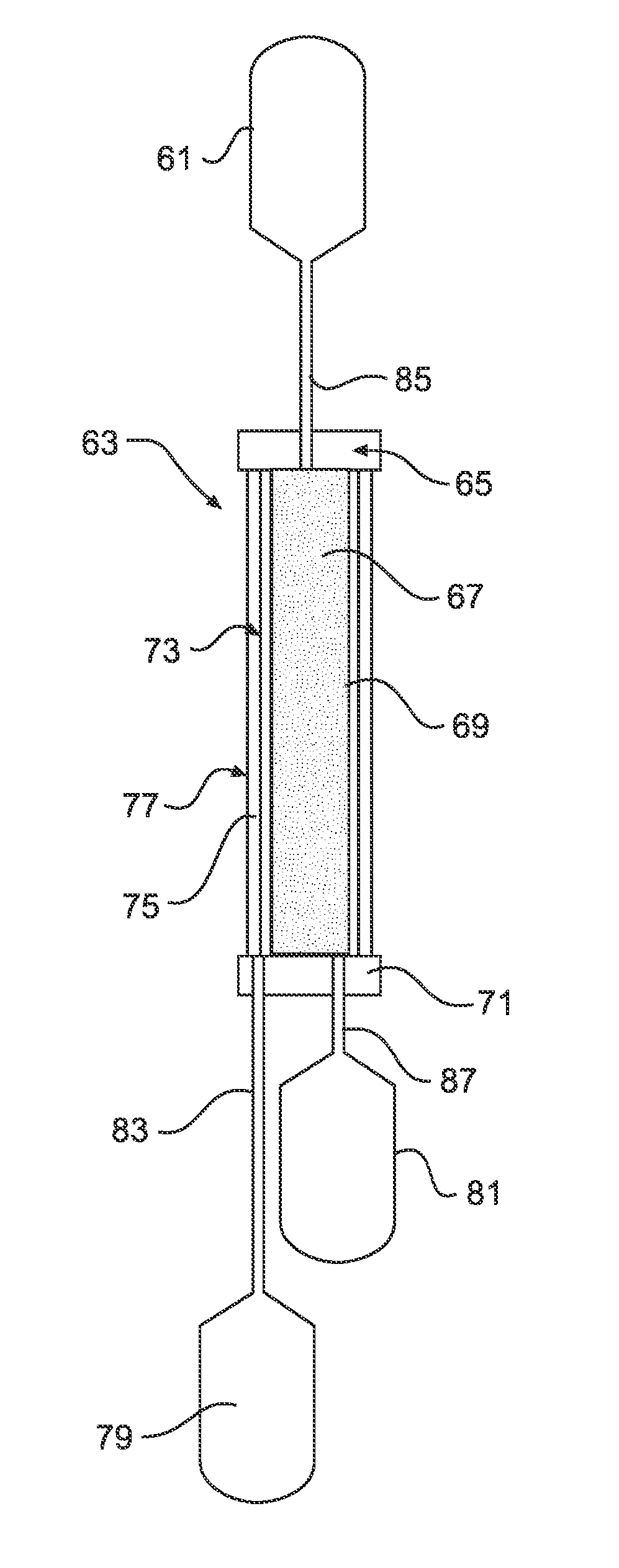Integrated leukocyte, oxygen and/or CO2 depletion, and plasma separation filter device
- Summary
- Abstract
- Description
- Claims
- Application Information
AI Technical Summary
Problems solved by technology
Method used
Image
Examples
examples
Preparation of PVA Grafted Coatings
[0145]A 30 mg / mL PVA solution is prepared by dissolving 1.5 g of PVA in 50 mL of deionized water, stirring for 2 h at 90° C. The pH value of the PVA solution is adjusted to pH 1 with 5 mol / L HCl. The PVA solution is applied to an activated silicone surface by simple adsorption. Then 10 mL of 1 mg / mL terephthaldehyde aqueous solution is added to the PVA solution, stirring for 2 h at 80° C. until the PVA is cross linked. mPEG is oxidized with acetic anhydride and dimethylsulfoxide (DMSO) to create an aldehyde terminated PEG (mPEG-CHO). mPEG-grafted PVA surface is prepared by adding the coated microspheres or fibers into a mPEG-CHO DMSO solution, then toluene-4-sulfonic acid is added and then mixed at 70° C. for 4 h, followed by a deionized water wash, and stored in a vacuum desiccator.
Exemplary Aspect A
[0146]Referring to FIGS. 6A and 6B, a whole blood leukoreduction filter, O2, and CO2 depletion device is shown in partial cross section. Whole blood o...
PUM
| Property | Measurement | Unit |
|---|---|---|
| thick | aaaaa | aaaaa |
| pore size | aaaaa | aaaaa |
| temperature | aaaaa | aaaaa |
Abstract
Description
Claims
Application Information
 Login to View More
Login to View More - R&D
- Intellectual Property
- Life Sciences
- Materials
- Tech Scout
- Unparalleled Data Quality
- Higher Quality Content
- 60% Fewer Hallucinations
Browse by: Latest US Patents, China's latest patents, Technical Efficacy Thesaurus, Application Domain, Technology Topic, Popular Technical Reports.
© 2025 PatSnap. All rights reserved.Legal|Privacy policy|Modern Slavery Act Transparency Statement|Sitemap|About US| Contact US: help@patsnap.com



